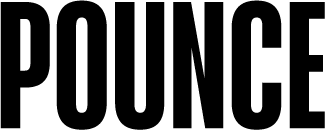Time management in a marketing agency is a high-wire act, balancing client demands with creative freedom, team well-being and the ticking clock of deadlines.
Seven years ago, I launched Pounce as a marketing agency dedicated to producing high quality, highly creative work. And of course that comes with a bunch of challenges.
But there’s one challenge I don’t think we talk about enough in this industry. Quality takes time. Creativity takes time. Even all the admin that’s required to keep projects on track takes time.
Yes, I know that sounds obvious when I write it out like that. Of course time is a factor. But in the daily crunch to ship deliverables to expectant clients, it’s easy for time to become undervalued. Ideally, we would have four hours for this, but can you squeeze it out in two?
In a marketing agency, time management is more than a routine operational requirement; it’s an art. It’s not just about prioritisation and ensuring everyone ticks off their tasks on a to-do list. It requires us to weave together the differing demands of creativity, of technology, of admin and operational efficiency with a deep understanding of what our clients and our team need to perform at their best.
Unlike some other industries where processes are strictly linear – think factory production lines – creative or knowledge-based work needs breathing room. Meanwhile, client expectations can require both agility and realism. Balancing all of this while keeping the team energised is no small feat.
Balancing client expectations with realistic timelines
Let’s start with the obvious: our clients are paramount. They are why we do what we do. Our job is to deliver quality work that meets their needs – ideally, above and beyond their expectations.
However, setting realistic timelines is critical. In the eagerness to please the client, it might be tempting to agree to a two-week turnaround on a campaign that realistically requires four. But the result is likely to be rushed work, stressed-out creatives and, worst of all, deliverables that don’t quite live up to their potential.
Yes, the brief may be met and the outcomes may be perfectly okay. But there’s always that nagging sense that, with a little more time, the results could have been truly great.
Quick turnarounds happen. Perhaps a new opportunity opened up with a short window. Perhaps something else fell through and a change of direction is required. A quick turnaround doesn’t necessarily mean a lack of planning. But there has to be a trade-off.
When clients ask for quick turnarounds, I like to think of it as ordering a five-course meal in a fast food takeaway. Sure, you can get some quick dishes to keep your date fed, but it’s hardly fine dining. Fine dining – like a top-tier marketing campaign – requires time to craft, test and refine.
Sometimes the most important time is that period after receiving the brief and before production actually begins; when the initial ideas and research have a chance to marinate, developing those stronger, more complex flavours that no amount of salt or MSG can replace.
For this reason, we often sit down with clients at the start to walk them through the project timeline. We discuss not just the milestones but also the underlying processes, the research, the testing and the review stages so that they fully understand what’s involved and how long things take. It’s about making them part of the journey.
Navigating projects and tasks
Efficient project management is the backbone of any successful agency. Tools like Asana, monday.com, Jira or Trello play a vital role in helping us keep track of where each project or deliverable is up to, who’s responsible for each task and what needs to happen next.
This also helps us to identify when a project has hit a blocker or bottle-neck that needs to be resolved before the work can continue. For example, the next stage in the project might not be able to commence until the client provides the necessary materials, or the person assigned to the next task might not have any available capacity until next week.
Over time, we’re also able to draw upon historical data to estimate realistic timelines based on similar past projects – which can be a lifesaver when managing expectations both internally and with clients.
One of the most important ways that tools help us to manage our operational efficiencies is by managing capacity. This allows us to view everyone’s workloads to make sure we’re neither overloading nor under-utilising our team.
Supporting the creative process
Creativity doesn’t operate on a stopwatch. Just because we set a timeline doesn’t mean everyone can switch on their creative A-game on cue. Yes, a great idea might pop into your head at any moment, but that doesn’t mean you always get to pick which moment. Well-written copy, attention-grabbing visual designs and compelling campaign concepts all benefit from having sufficient time to germinate.
This can make time management a challenge. However, while the creative process needs flexibility, it’s our job as leaders to guide it within a structure that still meets our obligations.
In my experience, giving the creative team some autonomy within the boundaries of a set timeline is key. They need enough breathing room to think, experiment and explore new ideas. But that doesn’t mean creative teams can take as long as they like.
One approach to handling creative deadlines is “timeboxing” – setting aside specific blocks of time for the creative team to brainstorm, develop and refine their ideas. Instead of pushing the team into rigid, creativity-stifling deadlines built around outputs rather than thinking, timeboxing recognises the need to provide the necessary space. As the project deadline nears, the team switches to tasks focused on finalising concepts and polishing details.
Building sustainable processes
It’s one thing to push for maximum productivity in the short term. But in an industry where we’re often rushing from one deadline to the next, burn-out becomes a real risk. Everything can’t be treated like a sprint when you’re running a marathon.
Sustainable workflows set a steady pace for each project while also distributing responsibilities across the team. While there will always be hiccups, this reduces the risk of the dreaded “last-minute rush” that can take a toll on everyone’s energy.
Forward-planning is also essential, particularly as we usually have some idea about what’s coming in the next few weeks. We might not know the full details of every project yet, but we know that we’ll have projects. While marketing is an industry that thrives on innovation and spontaneity, careful planning ensures things still get done.
Managing the unexpected
In marketing, as in life, things don’t always go as planned. We build these risks into our project timelines, knowing that delays will happen. For example, we typically assume client feedback will take an extra day or two. This may sound overly cautious, but it allows us to build a buffer without affecting the final delivery date.
Even then we still need to be agile enough to respond to unforeseen issues. People call in sick. Priorities shift. Stuff happens. That’s why our team holds a short huddle every day to discuss priorities, resolve blockers and adjust timelines if needed.
Collaborating for success
Client collaboration is essential – especially when it comes to agreeing and sticking to timelines. We make it clear to clients that their input is crucial at each milestone. We also discuss potential bottlenecks, such as extended approval times or the need for feedback from multiple stakeholders.
For example, if it turns out that a key stakeholder is away during the agreed window for feedback – something that’s always worth checking in advance – timelines will likely need to shift as a result.
Hot Tip: Another classic time-waster is sending through each stakeholder’s feedback separately, days apart. Always consolidate your feedback, smoothing out any inconsistencies, before sending it through. Your agency partners will love you for it.
Measuring success through client satisfaction
While time management is critical, we don’t measure success in our agency by how quickly we can turn around projects. Quality is still the goal.
A well-executed campaign launched a day or two later than planned will almost always be far more valuable than a rushed campaign that might be on time but misses the mark.
Building long-term relationships with clients is also part of this philosophy. Clients return to us because they trust our work, and they know we deliver not just on speed but on substance. They appreciate our commitment to high standards, and this helps us attract the kinds of projects our team thrives on.
Time management isn’t about enforcing a rigid schedule. It’s about creating an environment where our team can do their best work, where clients feel informed and supported, and where we all move forward together toward a shared goal.




